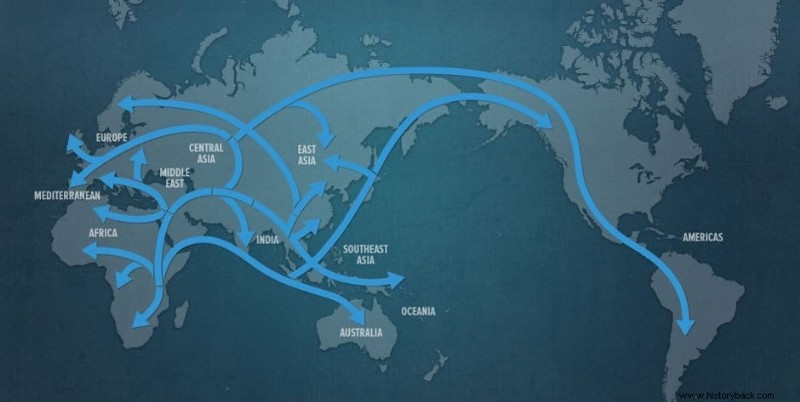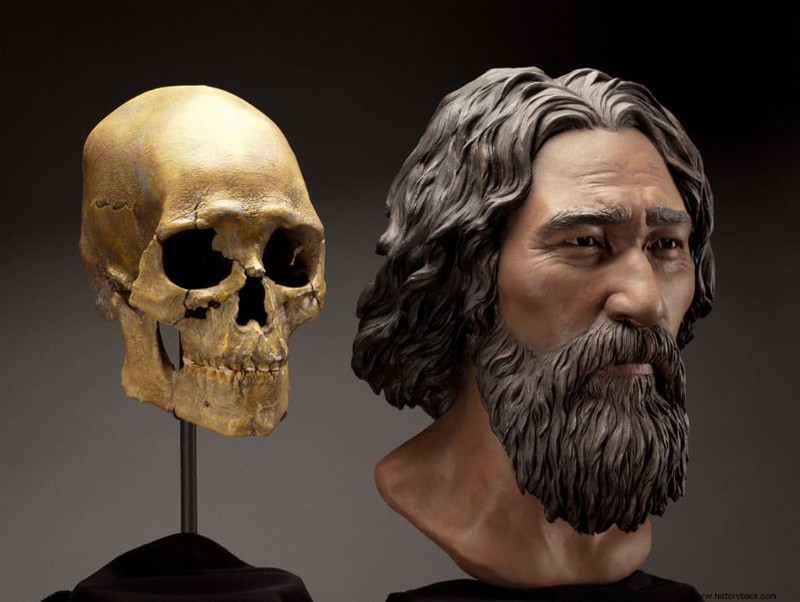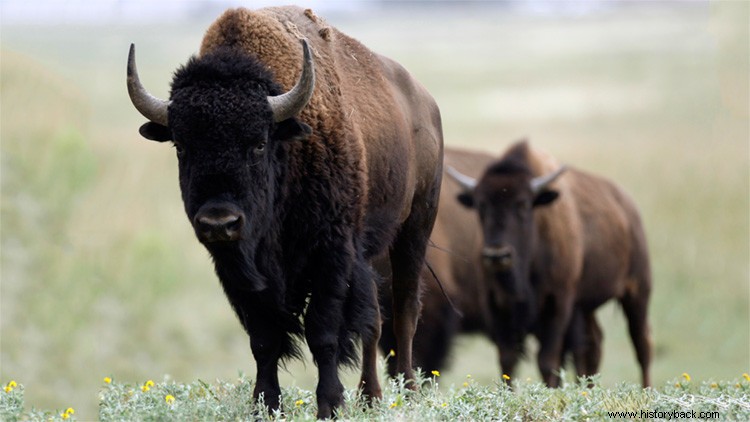It is very likely that primitive American man came from the Asian continent , in particular the human groups must have originated in the steppes Siberian or the region of Southeast Asia.
The similarity between the Asian population groups of those regions and the American aborigines has been the subject of study:ethnology, linguistics, cosmology and other factors have made it possible to form a link between the two human groups, although notable anthropological differences have been reported in some indigenous South American groups that may suggest a Melanesian or Australian origin.
The first men to arrive in America they crossed the Bering Strait about 15,000 years ago , they moved along the coast of the Pacific and only later in the hinterland.
The fossil stool samples ( coprolites ) found in the caves of Oregon show that two distinct civilizations they lived side by side more than 13,000 years ago .
A genetic analysis of Native Americans indicates that, in prehistoric times, North and South America they were affected by at least three migratory waves from Asia .
All the findings of human remains, in American territory, belong to Homo Sapiens.

The Clovis culture
Clovis is a locality in New Mexico , where "war points" were found, that is spear points elegantly chipped to make them sharp at the edges and finished with a longitudinal groove in the center of each face.
Later points like these were also discovered in the archaeological excavations of North America.
The Clovis populations they were made up of hunters who followed the migratory routes of large mammals, camped along the banks of rivers and streams where the big game went to drink and in winter they lived in caves.
To improve their diet they gathered fruits and berries. however, their main food was meat as evidenced by the discovery of bones of small and large mammals in the occupied sites.
The Clovis were also skilled craftsmen and stone workers, renowned for their beautiful translucent stone points with two fluted faces called Clovis Points.
In a few hundred years they spread to the coasts of North America going south to Mexico.
On the sudden disappearance of the Clovis various hypotheses have been advanced. Some scholars have believed that a sudden change in climate had reduced the availability of water, consequently the animals would have gathered at the now scarce springs, where they were easy prey for insatiable hunters, in this way the game would have dramatically decreased, depriving the Clovis of food.
Others argue that the first Americans found themselves at first in a favorable environment, inhabited by large herds. The availability of food would have led to a dizzying population increase, causing the rapid decline of game. As the big game diminished, the hunters would descend along America; then when the animals became extinct, there was a collapse of the population.
The man from Kennewick
The man from Kennewick , the remains of which date back to around 8500 years ago were found in 1996 in Columbia River, Washington State, is more closely related to Native Americans than to any other current population.
The researchers were able to compare the DNA sequences obtained from the skeleton with those of the large databases relating to today's populations around the world, discovering that the man from Kennewick it can only be connected very remotely with the Ainu and the peoples from Polynesia , while it is closely related to Native Americans.

But not only. From a more detailed comparison with the DNA sequences of the latter it emerged that, although it is impossible to assign the man from Kennewick to the lineage of a specific tribe, he is closely related to the members of the Confederate tribes of the Colville Reservation , in Washington State .
After the disappearance of the mammals of the ice age, the populations of hunters devoted themselves to bison and for over 10,000 years the successors of the clovis culture hunted bison in the plains.

About 10,500 years ago the bison was the dominant species, found in all the archaeological sites of the region and survived because it adapted to feed on grass when the ice disappeared and the climate changed.
Mass hunting for bison took off:the Olsen site- Chubbock contained over 140 carcasses, in a canyon where bison had been precipitated about 8500 years ago .
These bison jokes were community enterprises, carried out only once a year.
In the far north, the environment was able to guarantee the life of only small populations and therefore groups they moved regularly according to the seasons. The first to arrive were the Na-Dene , they were forest hunter-gatherers, who spread south, west and inland, where they became known as Athapaskan .
They later underwent some divisions and advanced further south, where they gave rise to the Navajo and the Apache modern.
The Eschimo-Aleuti came after the Paleoindians , before the land bridge disappeared.
They remained the most Asian of the North American Indians and their language has Siberian roots.
The Eskimos spread thousands of miles over the mainland and probably split from the Aleuts about 4,000 years ago.
